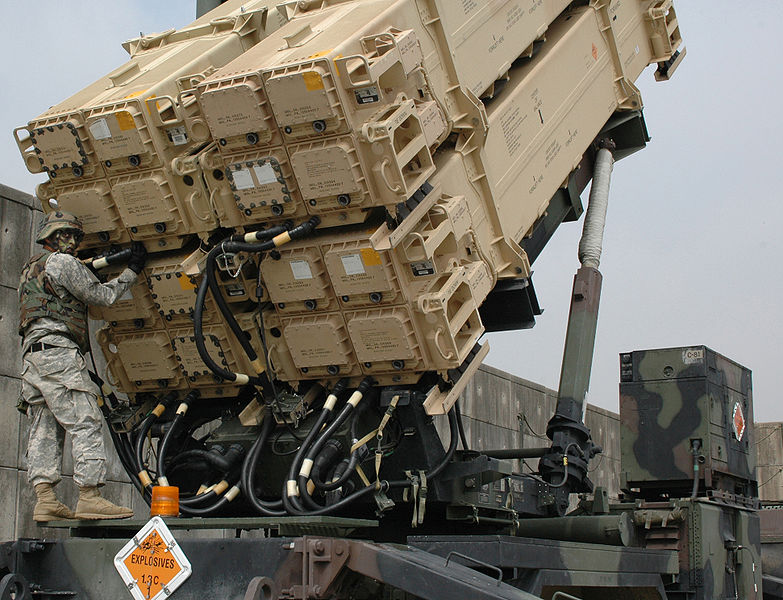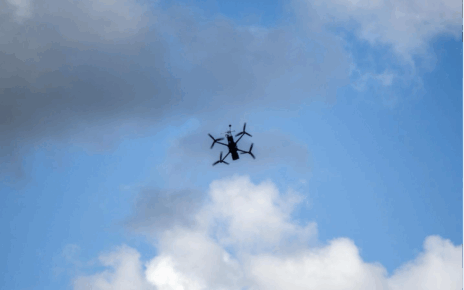Milosz Zak explores the significance of Lockheed Martin and Raytheon’s recent test of the new PAC-3 MSE Patriot Missile system, in the deserts of New Mexico, and weighs the balance between effective defense and diplomacy in the developing crisis on the Korean peninsula.
The Missile Test
If there is an early lesson from the ongoing crisis on the Korean peninsula it would have to be the continued relevance of effective missile defense systems; Lockheed Martin and Raytheon’s April 14th test in the deserts of New Mexico was one such demonstration.
Not only was the test a validation of progressively more effective US capabilities against ballistic missile technologies and airborne platforms, it also served as a demonstration for domestic, as well as international audiences. With North Korea’s recent “missile diplomacy”, it was guaranteed that everyone was watching.
Whether the April 14th test in New Mexico test was a US show of force, a show of technological superiority, or a demonstration of American preparedness, it has done little to address the peculiarities of the Korean theatre. The North Korean regime is known to engage in periodic, covert and sometimes overt strikes against US ally South Korea, making the test do little to quell fears in the region, concerns of nearby American territories or in the mainland US.
The mid-April test in White Sands, New Mexico, demonstrated the successful intercept of a “…challenging tactical ballistic missile (TBM)”, said Richard McDaniel, Vice President of Lockheed Martin’s Missile and Fire Control division. The TBM intercept was done with the most up-to-date version of the PAC-3 Missile Segment Enhancement (MSE) system; known to many as the Patriot Missile, developed by defense contractors Lockheed Martin and Raytheon.
The test, overseen by top US military staff, progressed from a successful detection and tracking, to a “ripple firing” of two PAC-3 MSE missiles as per military doctrine, with the first destroying the ballistic missile, and the second self-destructing as intended. The new PAC-3 MSE system has sixteen missiles, affording at least eight targets per platform. The previous version of the Patriot system currently defends Tokyo.
Following the test, Lockheed Martin’s Vice President Richard McDaniel underscored the relevance of continued enhancements to the existing PAC-3 system, its performance record, and its versatility against the most advanced missile and airborne targets currently in existence.
Security for the Region?
Does the test mean US assets, territories, and allies in the Asia-Pacific theatre are secure? Will technology win the day in a conflict with North Korea? Where does the April 14th test fit in the grand scheme of things?
The answer from analysts, academics and critics alike to questions of regional security has been a resounding “no”. It has been repeatedly demonstrated that the effectiveness of any Missile Defense Shield system depends not only on its proper functioning, but also on its strategic deployment. It is at this point that simple geography may trump the most advanced anti-missile technology available.
Driven to Diplomacy – with China
The crisis on the Korean peninsula reaffirms that technology is yet to invalidate effective diplomacy. As much as the West would prefer not to broker a deal with the “Hermit Kingdom”, which is effectively a Stalinist-era Communist preserve many times more extreme than Europe’s own version in Belarus, the US and its allies in the region seem to have been forcibly driven to the diplomatic table – with China.
At the moment North Korea is not holding the region for ransom, having not articulated strategic goals or even a reason for manufacturing the crisis. Experts speculate that concerns to consolidate the new leadership domestically have been the main catalysts. Whatever the reasons, the amount of North Korean propaganda, a series of escalations in the breakdown of peninsular cooperation, and threats of a nuclear strike have left the US and its allies far from an ideal diplomatic and security position.
It is frustrating to speculate that the recent diplomatic mission to Asia by US Secretary of State John Kerry may in fact indicate that the likely winner in the Korean Crisis will be China.
A successful rapport between China and North Korea could result in increased Chinese influence over North Korea, the Korean peninsula as a whole, and over the power politics of the region – for good or ill. It stands to be determined whether the new North Korean leadership is a satrapy of its much more powerful Northern neighbor, or an independent belligerent, bent on its official aims of Korean unification and resistance against American ”imperialism.”
At face value, the April 14th test appears to confirm that North America does have some sort of an effective means of defense against ballistic missile technology launched from mainland North Korea. However, the chances of any successful intercept cannot possibly be equal or better, if faced with a smuggled nuclear warhead, or a sub-surface launch somewhere off the coast of North America.
All of these nightmarish scenarios seem to validate American fears of the often-cited “barbarians at the gates” conundrum, which only fuels the call for effective and all-encompassing defense. Ultimately, neither effective defense nor effective diplomacy can provide any real guarantees of nuclear disarmament, cooperation or lasting peace, and neither the most advanced anti-missile technology, strategic “high ground,” or official pledges should fool states and their administrations into an imagined sense of security. Defense and diplomacy needs to be approached in an all-encompassing manner – as moving targets – and any onus of responsibility for either is irrelevant when faced with the kinds of threats seen in recent weeks. Although the PAC-3 MSE test is a welcome demonstration of ongoing developments in missile defense, it comes at a time of crisis in a theatre where it is not entirely effective, leaving security analysts and the initiated with additional questions, age-old problems, and with few solutions to the North Korean situation in sight.




